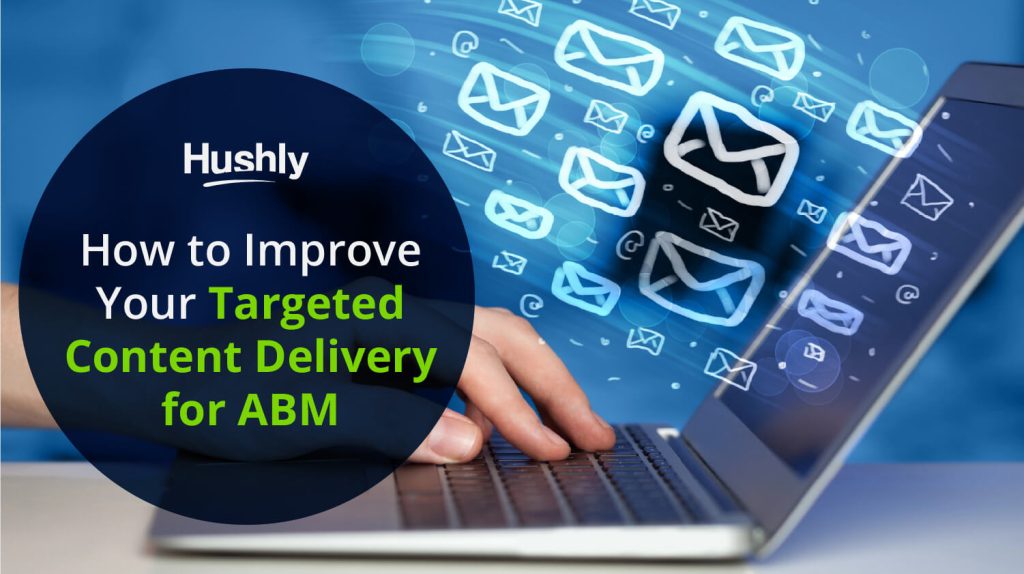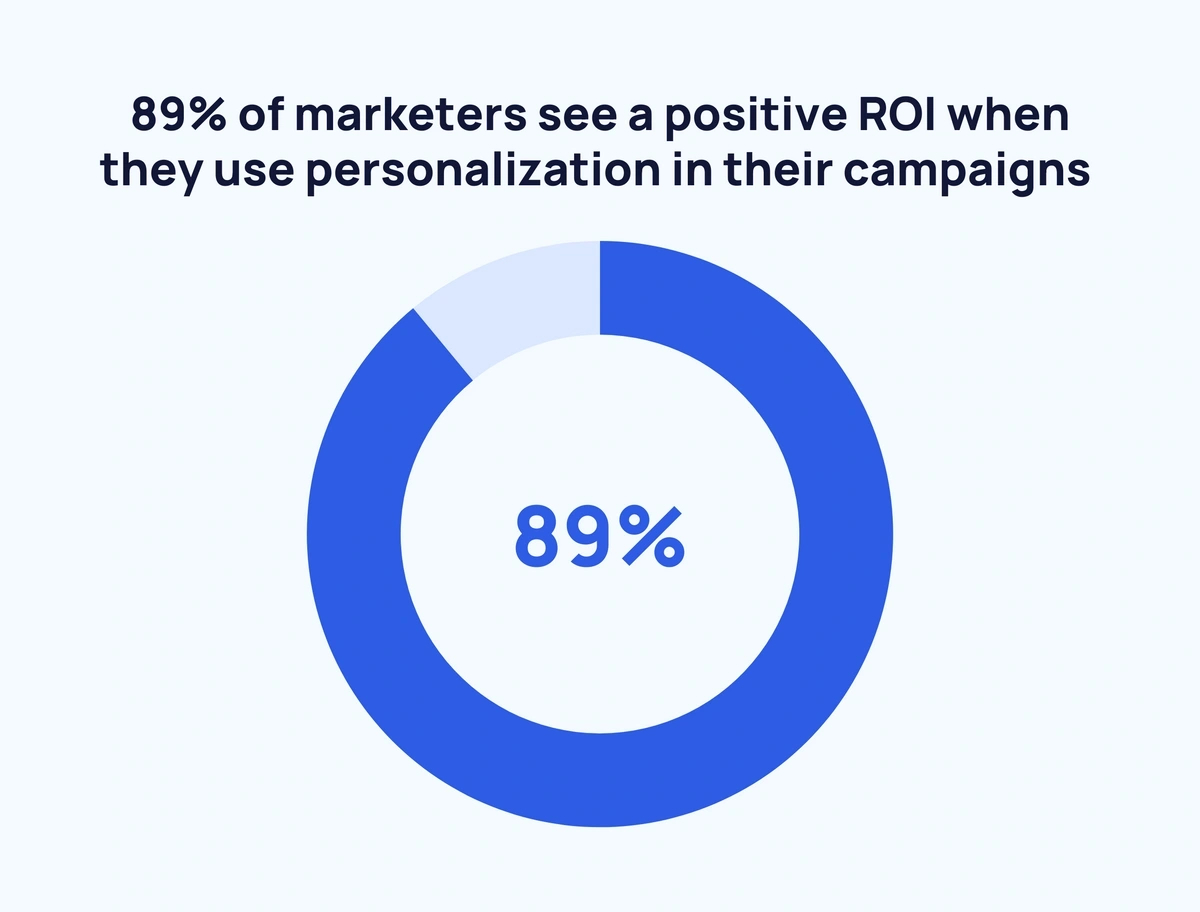Targeted content delivery serves the right message to the right person at the right time, but with an account-centric twist for account-based marketing (ABM). Instead of broad, one-size-fits-all campaigns, targeted content delivery for ABM focuses on the specific pain points, buying stage, and organization-level context of high-value accounts. When done well, it moves conversations forward faster, shortens sales cycles, and drives higher pipeline conversion rates than generic campaigns.
In this post, you’ll learn about targeted content delivery, why it matters for ABM, and the main challenges marketers face when collecting data. Plus, we’ll share essential tools you need to get started.

What Targeted Content Delivery Means (And Why it Matters)
Targeted content delivery in marketing means using data about a user or account to tailor the message, channel, and content experience. In ABM, personalization occurs at the account level, including microsites, whitepapers, case studies, and targeted outreach that reflect each account’s industry, integration needs, and likely objections.
ABM is effective because it replaces scattershot outreach with highly relevant experiences. Research shows ABM programs commonly deliver strong ROI. Data shows that 63% of companies with a complete ABM program have reported at least a 25% ROI, while 46% see at least 50% returns.

Source: Exploding Topics
Personalization and account focus increase engagement and conversion rates for high-value targets. In fact, 89% of marketers reported a positive ROI when they personalized their campaigns.
A Targeted Content Delivery Example
Here’s a classic example of targeted content delivery for you. An ABM program identifies an account researching “cloud migration ROI” on your blog, which serves as an intent signal. Their account tier is high-touch. Marketing automatically builds a personalized microsite with a case study from the same industry, a calculator showing expected ROI, and a tailored CTA to schedule a briefing.
The microsite is emailed to the named stakeholders and made available to the sales rep in their CRM. Engagement increases, and the account advances in the pipeline faster than with non-personalized outreach. (This is precisely the kind of workflow our platforms at Hushly aim to address.)
The Benefits of Effective Targeted Content Delivery
To help you see the value of implementing targeted content delivery into your B2B company, here are a few benefits that should get you on board:
- Higher Conversion and Pipeline Velocity: ABM and personalization increase pipeline conversion and speed up decision-making.
- Better ROI on Content Spend: Relevance reduces wasted impressions and creates high-value engagement with fewer assets.
- Stronger Account Relationships: Tailored experiences signal that you understand the account’s business, which deepens trust and opens doors for strategic conversations.
- Improved Sales-Marketing Alignment: Account-level targeting forces shared definitions and shared metrics between revenue teams.
The Main Challenges in Getting the Data for Targeted Content Delivery
Targeted content delivery isn’t without its challenges, though. Unfortunately, collecting the necessary data to implement it properly can be difficult. Here are a few reasons why:
- Privacy and Regulatory Constraints: Changes to tracking, stricter privacy laws, and evolving consumer expectations result in reduced access to third-party identifiers. First-party and zero-party strategies are becoming essential.
- Fragmented Data Sources: Sales CRM data, website behavior, content engagement, and third-party intent signals often reside in silos. Without a robust customer data infrastructure, creating a unified account view to power targeted experiences is challenging.
- Data Quality and Identity Resolution: Inaccurate job titles, bounced emails, or mismatched company names produce poor segmentation and irrelevant content delivery.
- Scale vs. Relevance Tradeoff: Delivering bespoke content for dozens of top accounts is feasible; doing it for hundreds or thousands requires automation and smart templating.
- Measuring Impact: Attribution for account-level content (microsites, for example) can be complex, making it harder to prove value unless you instrument the funnel correctly.
8 Ways to Improve Targeted Content Delivery
You don’t have to let those challenges get you down, however. There are eight steps you can take to enhance your targeted content delivery in marketing.
1. Start with a Single-Account View (SAV)
Build or use an account-level data model that merges CRM, marketing automation, analytics, and intent data into one place. A central SAV enables consistent content triggers and reporting.
2. Prioritize First and Zero-Party Collection
Move from third-party dependency to actively collecting first-party behavior (site events, form responses) and zero-party data (surveys, interactive tools). This maintains personalization while respecting privacy.
3. Use Tiered Personalization
Not every account needs bespoke content. Build tiers (high-touch, mid-touch, low-touch) and map content types to each tier. High-touch accounts receive tailored microsites and custom proposals; mid-touch accounts get targeted content hubs; low-touch accounts receive dynamic recommendations.
4. Create Reusable Personalization Building Blocks
Instead of unique, long-form assets per account, assemble modular blocks (such as hero statements, industry proof points, and ROI metrics) that can be repurposed into account-facing collateral. This scales relevance without increasing production time.
5. Orchestrate Delivery with Journey Maps
Map account buying journeys and attach content assets to specific moments (awareness vs. evaluation vs. purchase). Use triggers like intent indicators, site visits to pricing pages, or sales activity to push the right piece at the right time.
6. Test and Iterate with Experiments
A/B test subject lines, microsite layouts, CTAs, and content order. Continue to test and tweak based on the results. ABM benefits from learning at both the account-level and the individual level.
7. Blend Human and AI
Utilize AI to scale personalization (dynamic microsite generation, content selection), while maintaining human review for high-touch accounts. Generative tools can create outlines, summarize account signals, or recommend next-best content. Tools like AccountSherpa and ContentSherpa exemplify this model: AI-generated account microsites and AI-driven content hubs that still allow marketers to oversee the process.
8. Make Content Mobile-Friendly and Channel-Aware
Decision-makers consume content on multiple devices. Ensure email, microsites, and PDFs perform well on mobile and that messaging aligns with channel norms (short and scannable on mobile; deeper on desktop).
Essential Tools for Successful Targeted Content Delivery
So, which tools will help you successfully implement a targeted content delivery system? Here are some options you’ll want to consider adding to your tech stack:
- Analytics and Attribution: A web analytics platform (Google Analytics or enterprise analytics), plus account-level attribution, to measure content touchpoints and conversions.
- Customer Data Platform: Unify CRM, website, and intent signals into a single account view. This solves identity resolution and powers segmentation.
- Segmentation and Orchestration: Marketing automation and journey mapping tools that can act on account-tier rules and behaviors.
- Content Management and Delivery: Content hubs and microsite builders that support dynamic personalization and permissions. ContentSherpa-style tools (AI-first content hubs) can present personalized content libraries that learn from account interactions.
- Automation and Workflow: Playbooks, approval workflows, and templates to scale account-specific experiences.
- AI and Generative Capabilities: AI to create outlines, assemble account-based microsites, and suggest next-best content (AccountSherpa is an example of an AI tool explicitly built to generate account-focused microsites). Use AI responsibly by validating outputs and preserving a human approval step for high-value accounts.
- Privacy and Consent Tooling: Consent management platforms and privacy-preserving analytics to comply with regulations and build trust while capturing high-quality first-party signals.
Discover How Hushly Can Improve Your Targeted Content Delivery
Targeted content delivery is the engine that makes ABM meaningful. You can deliver account-level relevance at scale with the right data strategy (first and zero-party), a single account view, modular content, and the right stack of tools. And with Hushly in your tech stack, it’s easy to implement.
Want to take Hushly for a test drive? Book a call today.

